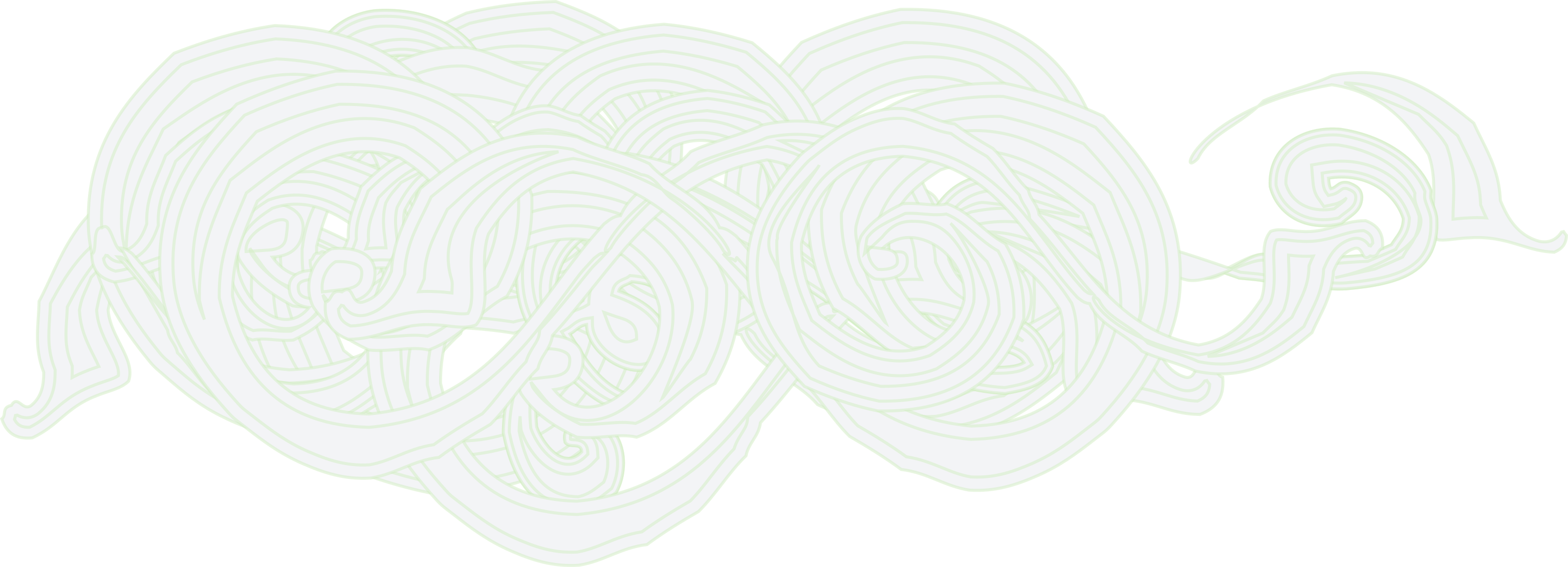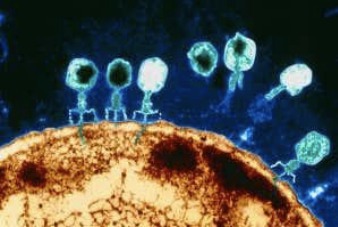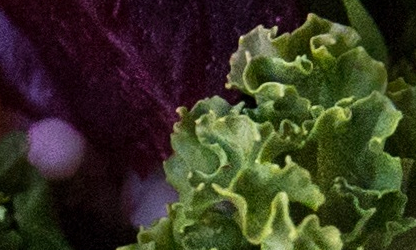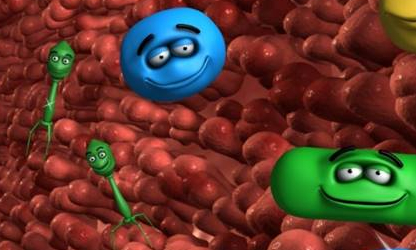

How bacteria-killing viruses are being used to keep food safe
LISTERIOSIS kills hundreds of people every year in Europe alone. The bacterium that causes it, Listeria monocytogenes, can contaminate all kinds of foods and keeps growing even in fridges. But if you live in the US, Canada, Australia, New Zealand or Israel, you probably have a lower risk of infection because you are eating foods sprayed with a cocktail of viruses that kill Listeria bacteria. Bacteria-killing viruses, called bacteriophages, are increasingly being used to destroy harmful microbes during food processing, to stop food rotting and to treat plant and animal diseases on farms. One big advantage of this approach is that phages can kill bacteria that have become resistant to antibiotics or disinfectants.
"One of the biggest issues with antibiotic resistance has been the abuse in the food industry"
Bacteriophages are already everywhere. There are an estimated 1031 phages on Earth, more than every other kind of biological entity combined. Your gut alone is thought to hold 1015. Given their multitudes, it is no surprise people have wanted to put them to work. Phages have been used to treat human infections since the 1920s, when the Eliava Phage Therapy Center in Tbilisi, Georgia, was set up. It still treats people today, but phage therapy is seldom used elsewhere. It is much easier to prescribe antibiotics 
Bacteriophages (light blue) attack an E. coli bacterium.
Science Photo Library than to find a phage capable of killing the specific bacterium infecting a person. When it comes to food, it is a different matter. Phages are increasingly being used in some countries to kill bacteria that cause food poisoning. The main targets are Salmonella, Shigella and the O157:H7 strain of E. coli, in addition to L. monocytogenes. These bacteria can lurk on fresh foods such as salads and can also contaminate the surface of foods after cooking. There is no perfect way to get rid of them. For instance, ionising radiation is extremely effective, but it can alter the taste, texture and look of food. When using phages, the usual approach is to spray a fine mist containing them over food. This can be highly effective at killing unwanted bacteria. Numerous studies show that it can reduce bacterial numbers by orders of magnitude and sometimes even to the point of undetectability. Other advantages are that phages leave no perceptible traces and have no effects on people, packaging, or machinery, unlike some of the chemical alternatives used for disinfecting foods. They can also be used on organic, halal and kosher foods. Treated foods don't have to be labelled, as all fresh foods already contain phages, so packaging can remain unchanged. Phage cocktail
Phage cocktail
However, the approach has its drawbacks too. The main issue is that each phage targets only one specific bacterial strain, so a mixture of phages is required to kill all the strains that might be present. This means a cocktail that proves potent in the US, say, might not work in other countries. And because bacteria are always evolving, the effectiveness of each phage needs to be constantly monitored and the mixture tweaked as necessary. This can complicate efforts to obtain regulatory approval, says Alexander Sulakvelidze, head of the Maryland-based phage company Intralytix. Regulators are used to dealing with single chemicals rather than cocktails requiring constant adaptation, he says. It took Intralytix more than four years to get its first phage product, ListShield™, approved by the US Food and Drug Administration in 2006. In addition, because phage sprays don't usually kill all bacteria, their populations can regrow over time, especially if food isn't stored properly. Other issues include chemicals in or on foods killing the phages, or the spray not coating every surface. For all these reasons, even phage enthusiasts are cautious about the claims they make. "It's a key tool that could be added to the toolbox," says Tobi Nagel at Phages for Global Healtha, a non-profit organisation that promotes their use in low-income countries. "I won't go so far as to say phages could be the be-all and end-all solution." Persuading companies to adopt the technology can also be hard. "Food processors were somewhat reluctant to apply viruses on their food," says Sulakvelidze. But many have been won over. The main motivating factor for them is avoiding food recalls, which can cost firms millions. For instance, in 2009 the Peanut Corporation of America filed for bankruptcy after being found to be the source of a salmonella outbreak that killed nine people. Today, Intralytix has five approved phage products for killing dangerous bacteria on human and pet foods, and is making a profit, says Sulakvelidze. Several other companies sell similar products. Nagel hopes to make such products available in low-income countries too. Phages for Global Health is working with researchers in Kenya on phage treatments for chickens just before slaughter, to reduce meat contamination with campylobacter. An additional challenge is storage, she says, as phages need to be kept cold, but a team in Canada has developed a way of turning phages into dry powders that don't need refrigeration.
"We have products targeting the spoilage pathogens of potatoes, mushrooms and salads"
Preventing food poisoning isn't the only thing phages are being developed for. Several teams want to make food last longer, by killing the bacteria that make it rot. "We have a pipeline of products targeting the spoilage pathogens of potatoes, mushrooms, salads, anything which is of commercial interest," says Alison Blackwell, chief executive of UK-based company APS Biocontrol. Extending shelf life would not only benefit producers and consumers, but also help save biodiversity and limit carbon emissions by reducing food waste. Food production is a major cause of emissions and habitat loss. Lastly, many teams hope to use phages to treat diseases in animals and plants. This could help reduce antibiotic use by farmers. "One of the biggest issues we've had with antibiotic resistance has been the horrible abuse in the food and agricultural industries," says Ben Temperton at the University of Exeter, UK. "If we can increase the amount of phage use and decrease antibiotics that can only be a good thing." But using phages on farms is trickier than applying them to food. When they are given to animals that are moving around and swapping bacteria, resistance can rapidly evolve and spread, says Sulakvelidze. With plants, resistance is less of an issue, says Blackwell, whose team is developing phage treatments for potato blackleg, a bacterial disease that attacks the stems of the plants. However, phage resistance isn't as serious a problem as antibiotic resistance. If phage resistance appears, you simply look for other phages that the bacteria cannot resist - and doing so is much cheaper than finding new antibiotics, says Temperton.
As regulators and companies become more comfortable using phages on food, it could also help with their adoption for treating antibiotic-resistant infections in people, says Temperton. "The familiarisation of using these as an antimicrobial can only really serve the clinical use of phages positively," he says. "If people see it working in food and it's kind of normalised that way, I definitely think that's going to be a big, big positive." This is already happening in the US, says Sulakvelidze. He says Intralytix decided to focus on food uses because it would have run out of money trying to get human therapies approved back in 1998 when it was founded. US regulators now have the understanding and processes in place to deal with such phage therapies, and Intralytix plans to launch three clinical trials within the next year or two.
Not just food
"There's clearly a renaissance in phages, and phage biocontrol and therapy, which hopefully will lead to some human therapeutic products in the not-too-distant future," he says. Intralytix also wants to launch phage "nutraceuticals" that people can buy, for instance to get rid of undesirable components of their microbiome, such as bacteria associated with obesity. The firm is exploring skincare and oral hygiene products too. But in Europe, the use of phages hasn't really progressed. APS Biocontrol, for one, has been waiting several years for approval to use phage products on farms, says Blackwell. "The US is really ahead of Europe," she says. The one exception is Belgium, where phage therapy can be prescribed. The approach is being pioneered at the Queen Astrid Military Hospital in Brussels. All in all, it looks as if phage therapy might finally go mainstream. "In the last five years, we've seen so much growth it's unbelievable," says Nagel. The bad news is that it is happening because we are fast running out of alternatives due to growing antibiotic resistance. "I think it's desperation," she says.







